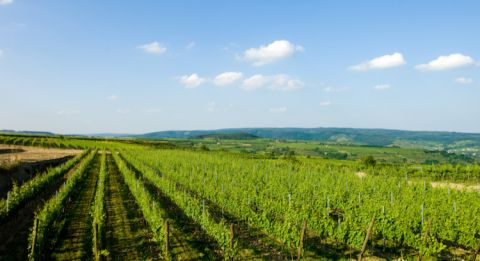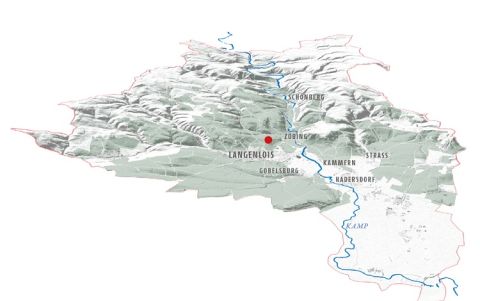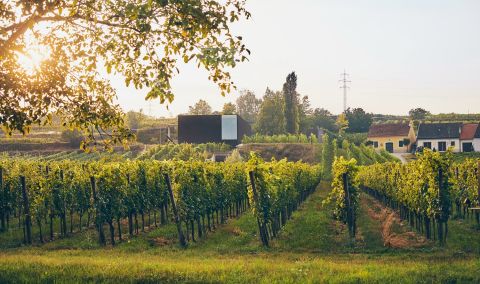2016 from €33, 399 Norwegian kroner, $61.99, 46 Swiss francs, £47.95 (several stockists in the UK, US and Switzerland are cheaper if you buy a case of 6)
2017 from €33, 39.20 Swiss francs
Why do so many wine wine lovers appear to take red wines more seriously than whites? (See Fine wine can be white too.) Is it just a matter of taste or is it also to do with a wine’s ability to age and become more interesting in the bottle? True, lots of whites are made to be drunk young when they are zesty, fresh and full of bright, primary fruit flavours. But that thirst-quencher style is increasingly popular for red wines as well today. And delicious they are too.
One swallow may not make a summer and two wines do not make a case but these two vintages of Loimer’s Käferberg Grüner Veltliner from Langenlois in the Kamptal region of Lower Austria will, I hope, convince many doubters of the greatness of white wine and, if you can wait long enough, justify its claim to longevity.
Vintages 2016 and 2017 are terrific now – powerful, distinctive, intense and beautifully balanced even with quite moderate acidity compared with the region’s Rieslings, for example – but they should age for at least another 15 years and probably longer. (See Mature Austrian whites, Aged Austrians and Austria – a selection of 2010s for many more examples of the great ageing potential of Austrian white wines, both Grüner Veltliner and Riesling.) Both wines have aromas and flavours that I can only describe as ‘golden’, not in the least sweet, but rich and burnished, a little bit spicy, full of diverse, entangled fruit flavours and with a freshness and vitality that cannot be ascribed to the level of acidity in the grapes. They are minerally, too, but not stony (like archetypal wines from Chablis), much more a minerality that seems to come from deep underground, better tasted than described. (See my longer tasting notes in our tasting notes database on the 2016 and 2017.)
German speakers might wonder, as I did, whether this vineyard (above) is plagued with insects (Käfer is German for beetle) but it is probably named after a former owner, first referred to in 1317 as Cheuerperg, in 1355 as Cheferperg, in 1507 as Keferberg and since the early 18th century as Käferberg (as recounted in Elisabeth Arnsberger’s Flurnamen erzählen, 2017, and passed on to me by Stefanie Lobner, managing director of Premium Estates of Austria, of which Loimer is a member). This vineyard has been here for a while.
Fred Loimer (top) has been making wine in Langenlois for quite a while too, since the early 1990s, taking over from his father in 1998. He began converting his vineyards to biodynamic viticulture in 2006 and was a founder member of the German-speaking biodynamic association respekt-BIODYN.
Loimer has always been a pioneer, shocking other local producers by his use of small oak barrels for the region’s signature grape variety Grüner Veltliner soon after he graduated from Austria’s main winemaking institution, Klosterneuburg, in the early 1990s. Not something he does now… (Many found his new winery, the ‘minimalist black cube’ pictured below, shocking too.)
All his experiences and experiments seem to have led him to revere more and more deeply the vineyard as the origin of quality and the critical importance of the farm as a self-sustaining entity in partnership with those who look after it and make the wines. In other words, individuality resides both in the land and the producer.
As he says on his website:
‘The determining factor for the quality of a wine is its origin. And we are convinced that biodynamics is pure origin. Biodynamics enhances the character of the wine, makes it more vibrant and expresses the characteristics of its origin more precisely. Each of the many measures and steps involved in biodynamic wine-growing give to the wine a piece of its origin, its environment and its creator.’
Both the 2016 and the 2017 vintages of the Käferberg Grüner Veltliner fulfil this vision even if they are distinguished by the vintage conditions and by one very significant change in the winemaking in 2017: the wine spent another winter and early summer on the lees in tank before bottling 22 months after the harvest, whereas the 2016 was bottled just 11 months after harvest. (Note the similar changes at Sattlerhof with their Gamlitz Sauvignon Blanc about which I wrote recently.) This longer time before bottling seems to have increased the freshness of the wine in what was a warmer vintage.
Fred Loimer explains the differences in the two vintages:
‘Both started early but frost damage in 2016 changed everything. The shock of a frost incident stopped the vines for around two weeks. Buds had to recover so the season started a little late, or later than 2017. Rains in the first half brought good growth but a high risk of downy mildew. Second half of the season was good. September was great – low-yielding, good sugar ripeness, low acidity, regular harvest time in October. 2016 is one of the moderate years.
‘2017 – the earliest budbreak ever, very quick growing and very early flowering, very dry conditions. Rains at the beginning of August helped a lot in the face of the drought. Early harvest, 2017 is one of the hotter years.’
Apart from the length of time before bottling, the wines were made in a very similar way: hand-harvested grapes, 24 hours’ maceration on the skins, spontaneous fermentation (ie no added yeast) in 1,250-litre and 2,500-litre oak barrels over a period of four weeks at a maximum temperature of 24 °C.
What’s interesting is that the 2017 is just as fresh as the 2016, if not more so, perhaps also more precise, even though it was a hotter vintage. Maybe this is down to the differences in the length of time on the fine lees in tank before bottling? (A technique favoured by many in Chablis.) They have now changed this aspect of the winemaking in all their single-vineyard wines, and they can bottle without fining or filtration as the wine has longer to settle.
Fred Loimer’s wines are imported into the UK by Liberty Wines and into the US by Winebow, both of whom are currently on the 2016 vintage. If you are willing to buy a case of six, the lowest price in the UK is from The Fine Wine Company.
Loimer provided this list of other importers (with their current vintage):
- Belgium: Leirovins (2017)
- Denmark: Oesterreich Vin (2017)
- Norway: Vinarius (2016)
- France: Oenotropie (2017)
- Netherlands: Residence Wijnen (2017)
- Japan: Nihon Grande Champagne (2016)
- Spain: Lavinia (2016)
- Cayman Islands: Cayman Distributors (2016)
- Singapore: Wein & Vin (2017)
- Brazil: Bodegas de Compostela (2016)
- Taiwan: Schoenbrunn (2017)
- Sweden: Lively Wines (2017)
Find out more about Grüner Veltliner on JancisRobinson.com.

















